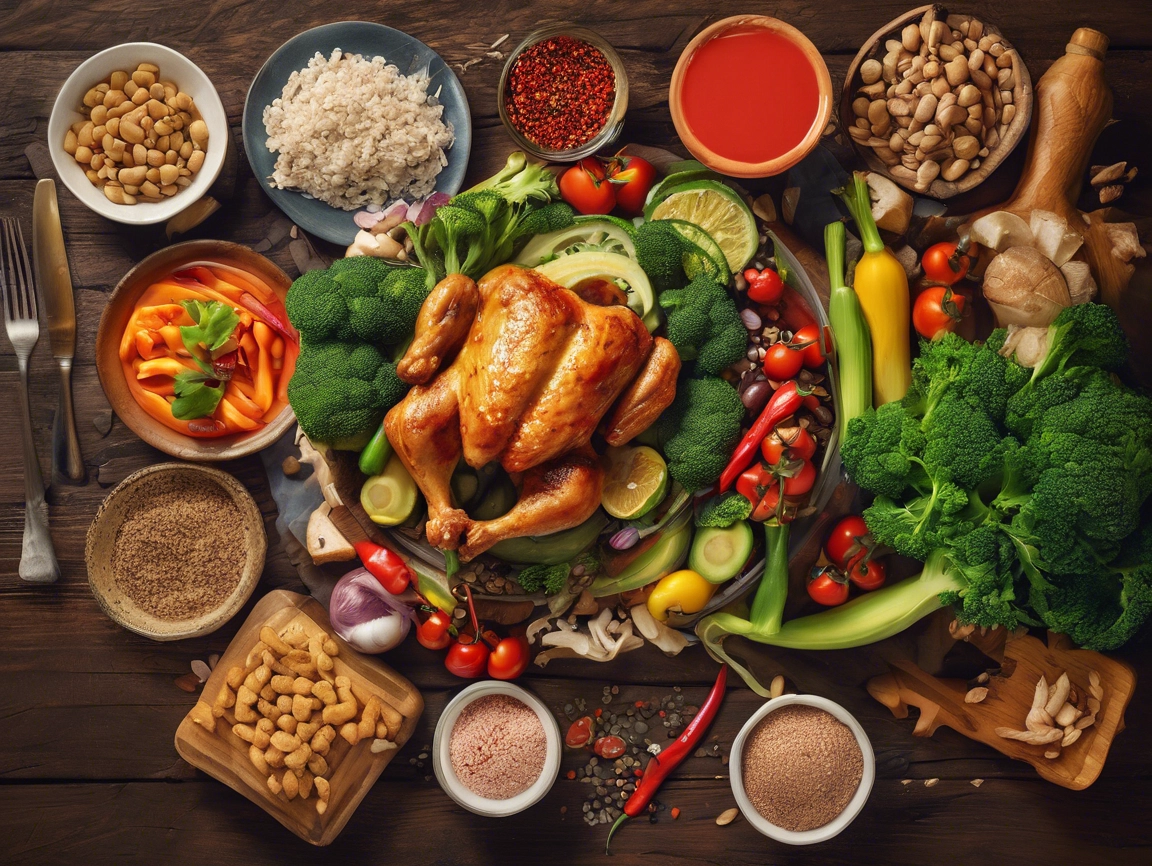The thermic effect of food, also known as TEF, is the number of calories the body burns while digesting and processing food. Some foods require more energy to break down, which increases calorie expenditure and supports fat loss. By choosing foods with a higher thermic effect, you can naturally boost your metabolism and burn more calories throughout the day. This article explains how TEF works and which foods can help maximize fat burning.
What Is the Thermic Effect of Food?
The thermic effect of food refers to the energy required for digestion, absorption, and metabolism of nutrients. Different macronutrients have varying TEF levels, meaning some foods cause the body to burn more calories than others.
The approximate thermic effect of each macronutrient:
- Protein: 20 to 30 percent of its calories are burned during digestion
- Carbohydrates: 5 to 10 percent of its calories are burned during digestion
- Fats: 0 to 3 percent of its calories are burned during digestion
Protein has the highest thermic effect, requiring more energy to digest and metabolize compared to carbohydrates and fats. This is why high-protein diets are often recommended for fat loss.
How Can the Thermic Effect of Food Help Burn Fat?
The thermic effect of food increases the total number of calories burned throughout the day. When combined with a calorie deficit, this can accelerate fat loss. Foods with a higher TEF not only boost metabolism but also promote satiety, making it easier to control hunger and reduce overall calorie intake.
Consistently choosing high-TEF foods helps:
- Increase daily calorie burn without extra exercise
- Improve metabolism and energy expenditure
- Enhance satiety, reducing cravings and overeating
Best Foods to Maximize the Thermic Effect
High-protein foods
Protein has the highest thermic effect, making it the most effective macronutrient for boosting metabolism. Eating protein-rich foods can increase calorie burn and help preserve lean muscle mass during fat loss.
Best protein sources:
- Chicken breast
- Lean beef
- Fish such as salmon, cod, and tuna
- Eggs and egg whites
- Greek yogurt and cottage cheese
- Tofu, tempeh, and legumes
High-fiber carbohydrates
Carbohydrates with high fiber content require more energy to digest than refined carbs. Whole, unprocessed carbs also provide steady energy and support gut health.
Best high-fiber carbohydrate sources:
- Oats
- Quinoa
- Brown rice
- Sweet potatoes
- Lentils and beans
- Leafy greens and cruciferous vegetables
Spicy foods
Spicy foods contain capsaicin, a compound that increases thermogenesis, or calorie burn, by stimulating the nervous system. Consuming spicy foods can temporarily boost metabolism and reduce appetite.
Best spicy foods for fat burning:
- Chili peppers
- Cayenne pepper
- Jalapeños
- Red pepper flakes
Green tea and coffee
Certain beverages also have a thermogenic effect. Green tea contains catechins and caffeine, which work together to enhance fat oxidation. Coffee stimulates the metabolism and can increase calorie burning, especially when consumed before exercise.
Best thermogenic beverages:
- Green tea
- Black coffee
- Herbal teas with ginger or cinnamon
How to Incorporate High-TEF Foods Into Your Diet
To maximize the thermic effect of food, structure your meals with a focus on protein, fiber, and metabolism-boosting ingredients.
- Start the day with a protein-rich breakfast, such as eggs with vegetables or Greek yogurt with oats.
- Include lean protein sources in every meal to maintain muscle and increase calorie burn.
- Choose whole, fiber-rich carbohydrates instead of refined grains.
- Add spices like cayenne or chili flakes to meals for an extra metabolic boost.
- Drink green tea or black coffee in moderation to enhance fat oxidation.
Does TEF Alone Lead to Fat Loss?
The thermic effect of food contributes to overall calorie burn, but it does not replace the need for a calorie deficit. Fat loss occurs when calorie expenditure exceeds calorie intake. TEF can enhance metabolism and support a fat-loss diet, but it must be combined with proper nutrition, exercise, and portion control for the best results.
Final Thoughts
The thermic effect of food is a natural way to increase calorie burn and support fat loss. By prioritizing protein-rich foods, high-fiber carbohydrates, and metabolism-boosting ingredients like spicy foods and green tea, you can optimize your diet for better results. While TEF alone will not cause significant fat loss, it is a useful tool when combined with a balanced diet and regular physical activity.
For more insights on metabolism and fat loss, check out this study on TEF and energy expenditure.
Read Next…
- Physically Active Careers That Make It Easy To Stay Strong
- Can Fitness Improve Love for Couples Over 40?
- Why Is a Protein Breakfast Important Before Church?
- Why Use a Weighted Vest in Your Faith-Fueled Fitness Routine?
- Can Faith Help You Break Through a Fitness Plateau?
Subscribe now and get a 14-day free trial workout app for iPhone users.






